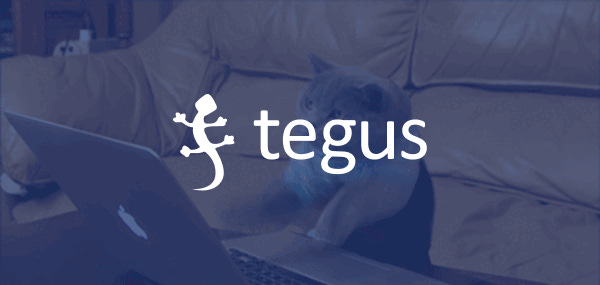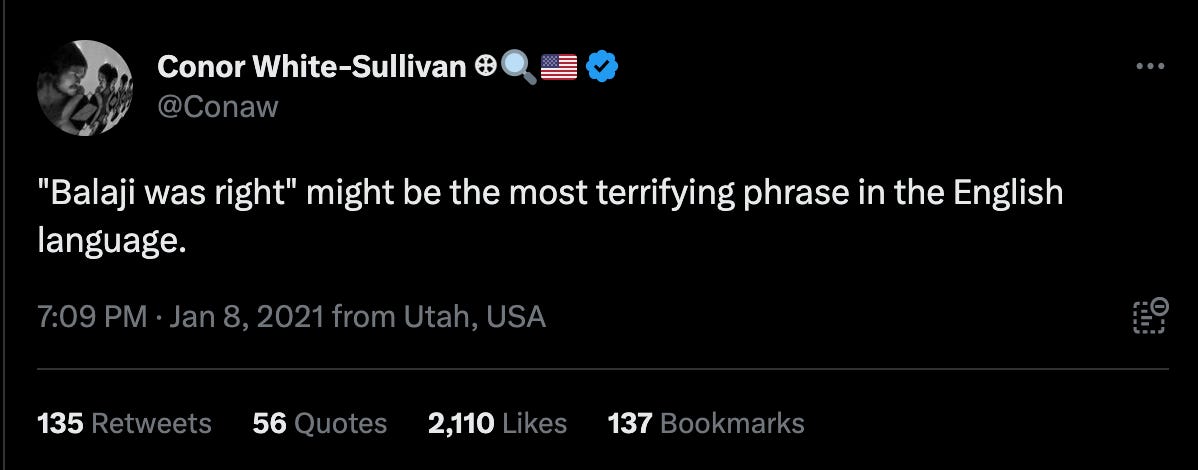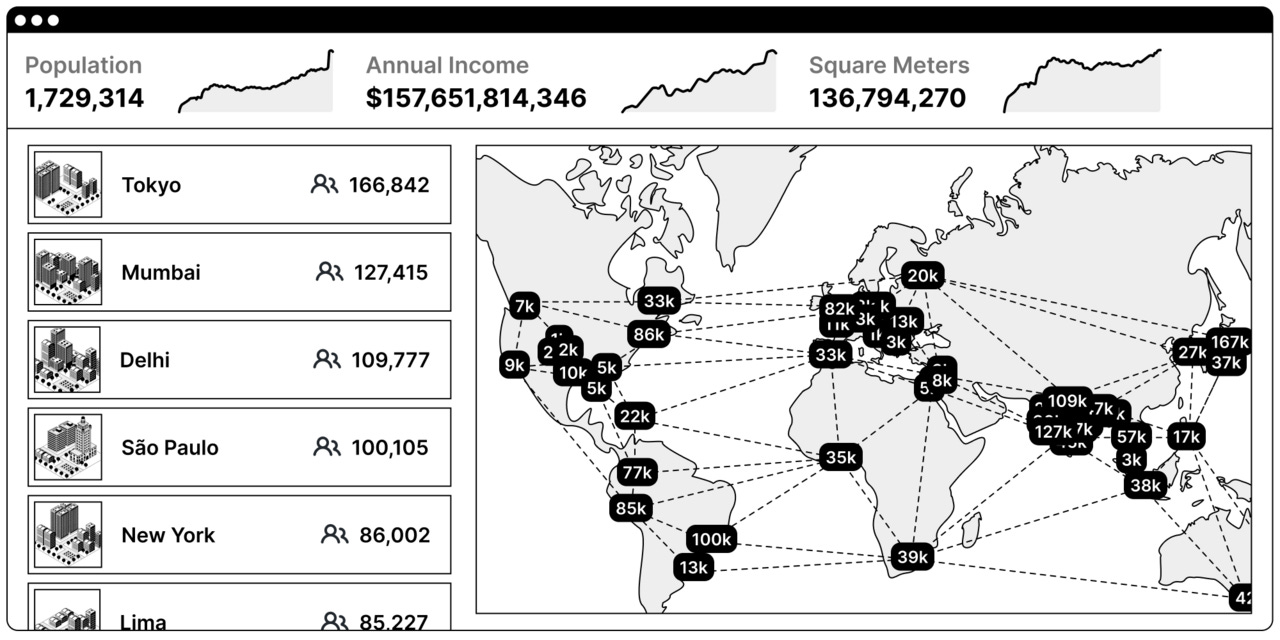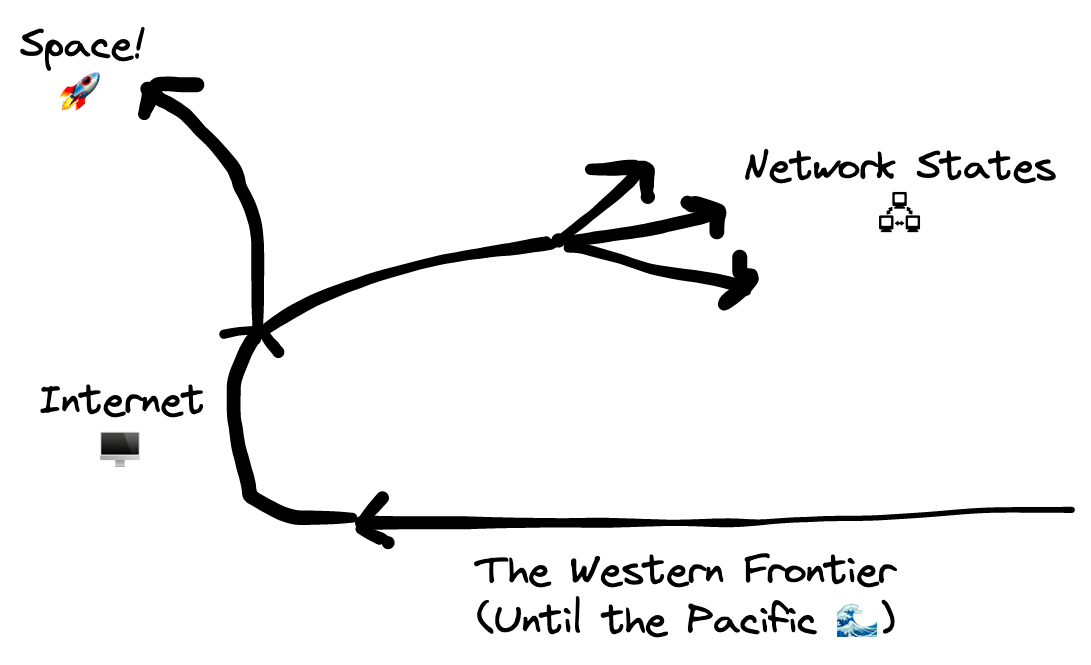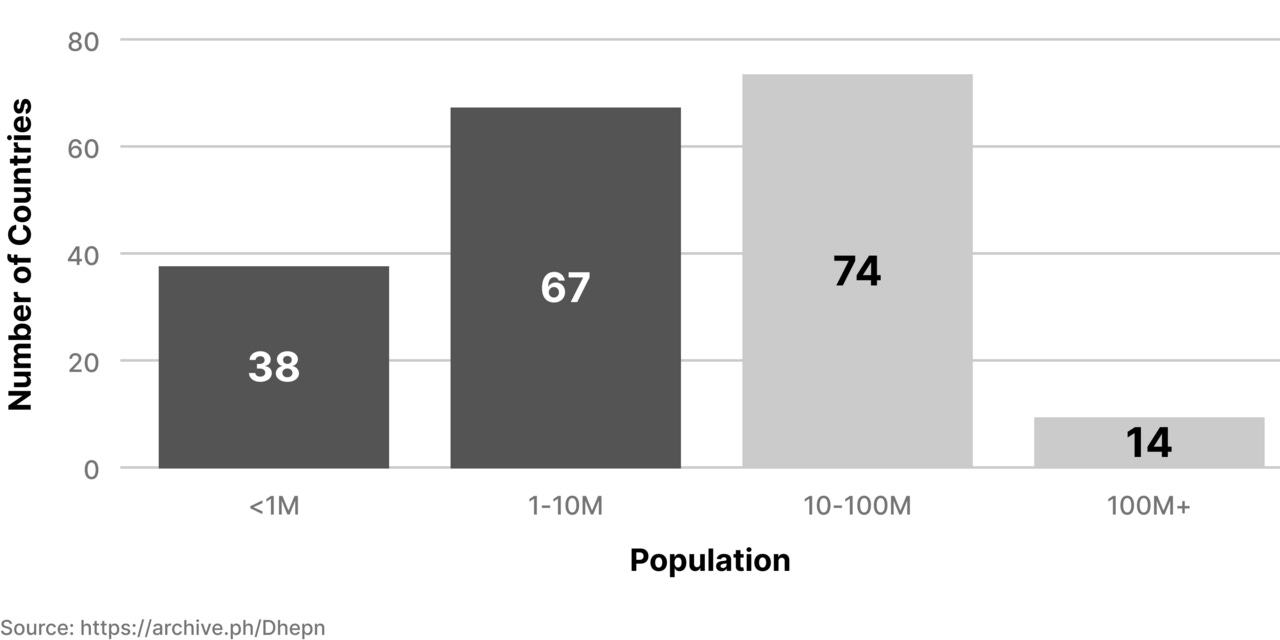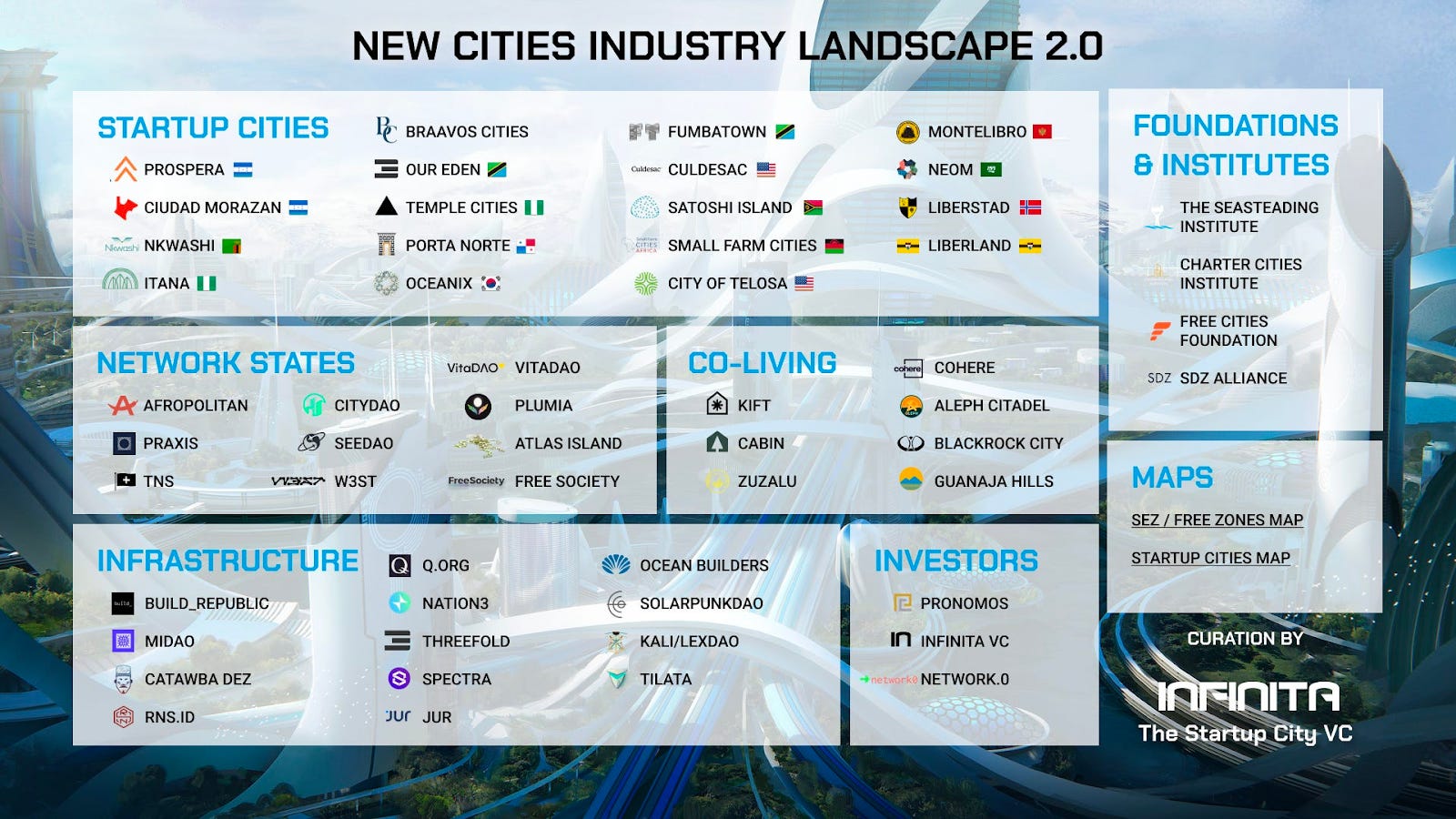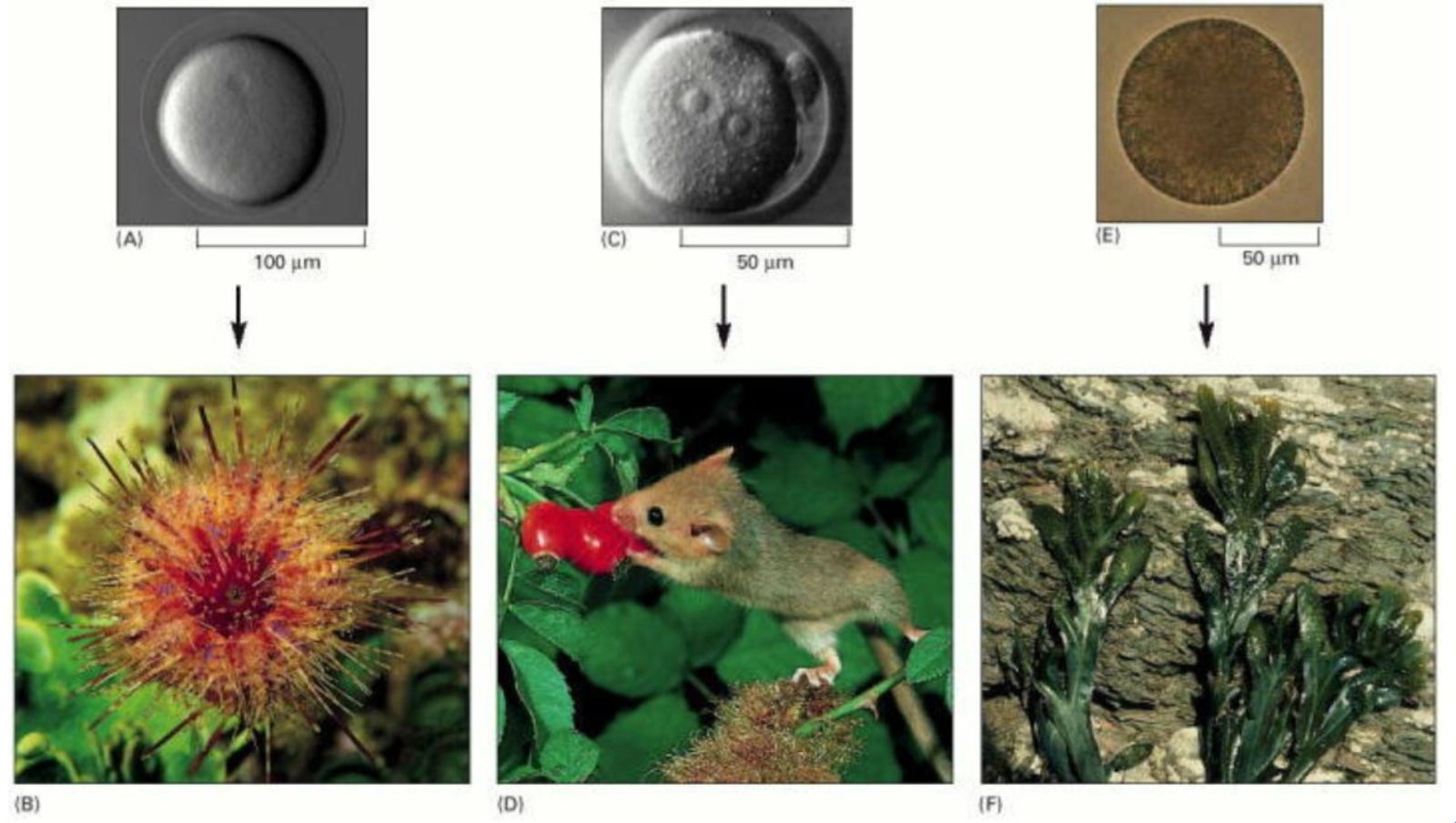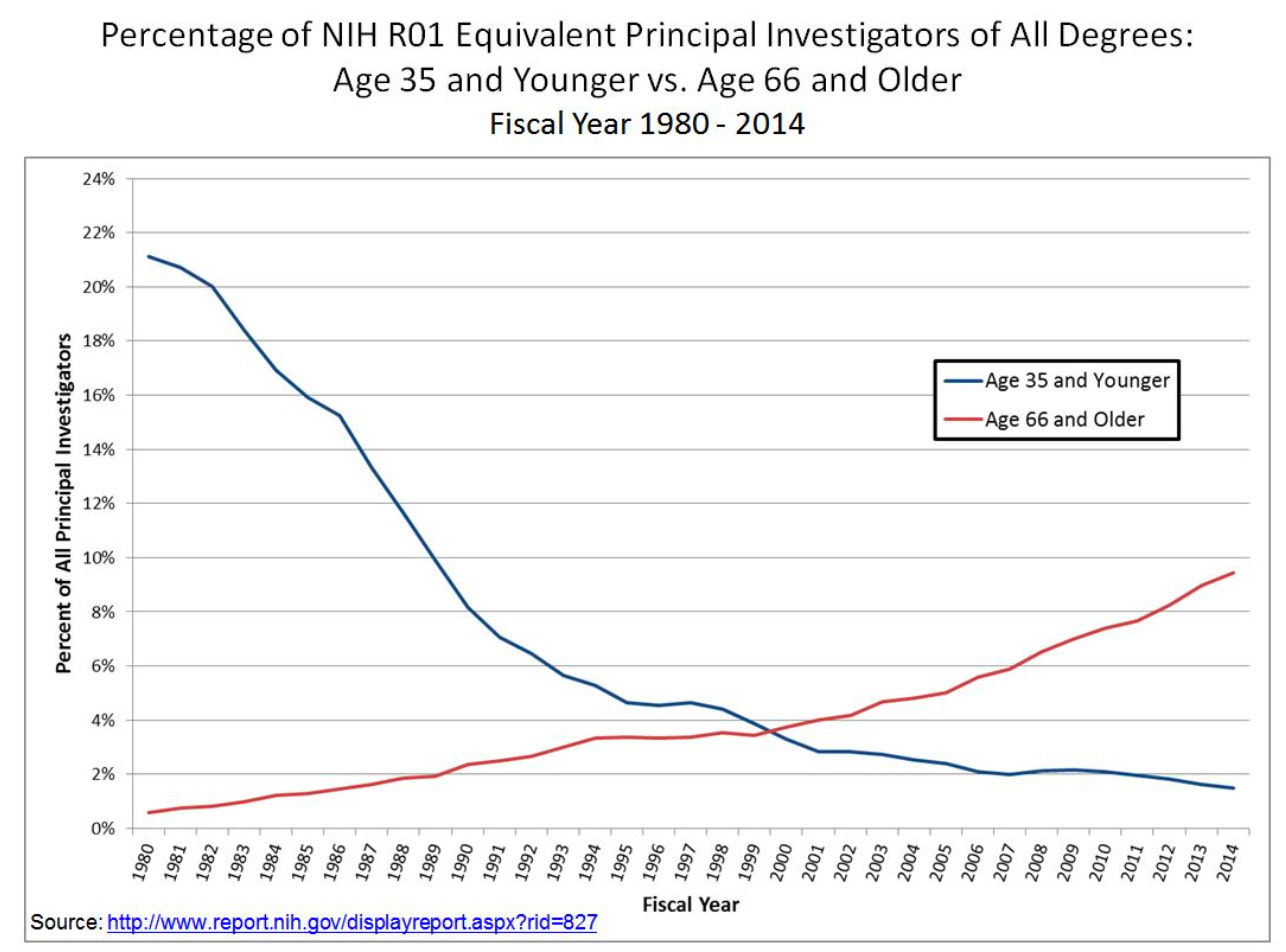Not Boring by Packy McCormick - Blockchain Meets Bio
Today’s Not Boring is brought to you by… Tegus Tegus is your go-to research destination for bold investing. It curates expert insights, analysis, and financial data to give you a powerful perspective for your investment decisions. With lightning-fast access to over 60,000 transcripts across 20,000 companies, you’ll discover a wealth of unique insights to fuel your fundamental research. With Tegus’ new machine learning technology, you can quickly identify transcripts that offer the most relevant and timely insights to expedite your research. Gain perspectives, synthesize information, and model outcomes—all on Tegus. For free trial access to Tegus, click here. Hi friends 👋, Happy Tuesday! The weather here in NYC continues to be immaculate and the world’s technologists continue to give us stuff to be optimistic about. Life is good. Quick programming note: welcome to our Summer Schedule. We’ll be publishing Monday pieces on Tuesday through Labor Day (and potentially beyond) so that I’m not spending every Saturday and Sunday this summer debating whether I should go outside with Puja and the kids or stay inside to write. Rules are made to be broken though: we’re publishing next week’s piece on Sunday. You’ll see why. Today’s post is a guest post from Not Boring’s very own Biotech Partner, Elliot Hershberg. If you don’t subscribe to Elliot’s newsletter, Century of Biology, go do that right now. I’m biased, but it’s the best biotech newsletter out there. Typically, Elliot covers straight biotech, from his excellent 4-S Series on the four things influencing the space’s rapid progress – Sequencing, Synthesis, Scale, and Software – to deep dives on specific applications and companies. Recently, though, Elliot has started to get just a little crypto-pilled, and last month, he attended the Blockchain Meets Bio Summit in Zuzalu to explore the potential intersections of the two fields with some of the smartest people in both camps, so we asked him to write up what he saw and learned there in Not Boring. We’re firm believers that some of the coming years’ most magical technology will be built at the intersections of different disciplines. Elliot’s piece is an exploration of one of those intersections. Let’s get to it. Blockchain Meets BioA Dispatch from the Future by Elliot Hershberg As our plane descended toward the Black Mountain, we saw the glowing Adriatic Sea in the distance. Night fell. We weaved our way along narrow mountain roads and entered a deep tunnel, emerging on the other side of an otherwise impassible rock face. Our ride ended at a small beach village nestled directly at the foot of the mountains. It was not an ordinary beach village. This was a city within a city, an experiment with statehood embedded within another state. Members of a global digital tribe concerned with running one of the largest World Computers had decided to make this their temporary home for several months. It was an experiment in digital citizenship. We joined this city as representatives of another tribe—the biotic tribe. In their ongoing experiment with statehood, the World Computer tribe had come to a realization. Sovereignty is intimately connected to physical abundance. Societies need to run on atoms. Materials, food, water, medicines. They began to wonder: what tools exist to develop local, independent, sustainable supply chains? Our answer was: biology. Using the tools of synthetic biology, perhaps this new Network State could one day meet all of its material needs by growing everything. Could they grow their own cement to make new buildings, their clothing, and their medicines by using biology as a technology? This was a Summit—a meeting between tribes. It was a chance to establish a shared language. To consider how distributed biomanufacturing could advance the cause of Network States, and how the vast and decentralized World Computer could be harnessed to accelerate science. No, unlike Packy’s recent story, this is not a piece of science fiction. I’m describing my recent trip to Zuzalu, a pop-up city located in Montenegro, for the Blockchain Meets Bio Summit. This workshop was held between leaders in the blockchain and synthetic biology communities to identify fruitful points of connection and collaboration. When I heard this was happening, I knew that Packy and I needed to go. Packy has spent a lot of time thinking really hard about the wild world of web3, and I’ve done the same for synthetic biology—two core focus areas of Not Boring were colliding! Ironically, while Zuzalu is experimenting with developing frictionless digital passports using zero-knowledge proofs, Packy wasn’t able to make the trip because of the difficulty involved in updating his U.S. passport. So, you’re getting my rendition of the events—and of the key ideas discussed at this summit. As the resident bio-optimist at Not Boring, I was excited to brainstorm about ways to power future societies using distributed biomanufacturing. Beyond that, a major goal in attending this summit was to more deeply understand the other direction of this relationship—what problems are members of the Decentralized Science (DeSci) community solving for scientists? While sentiment around crypto is at a major low, the DeSci community seems to remain as energized as ever. Zuzalu has been described as “a Burning Man for futurists, by others as a sleepaway camp for the crypto elite, and by many attendees as a life-altering experience with historic implications for the biological, political, and social potential of our species.” Personally, this summit genuinely felt historical. It was a meeting between generational founders. Long conversations in the evening between Vitalik Buterin—founder of Ethereum—and Drew Endy—one of the founders of synthetic biology—grappled with questions about how to organize societies, design currencies, and safely democratize Godlike biotechnology. As a researcher and investor, my job is to accelerate the translation of crazy technologies. Still, my time at Zuzalu updated my priors on just how crazy the future is going to be. You’ll need to strap in because this is a complex story with many intertwining threads. We’re going to examine several big ideas about how we should organize our digital and physical worlds—and what to do as the boundary between the two disappears. We will explore both sides of the Blockchain x Bio connection—how synthetic biology could meet the physical needs of Network States, and how DeSci could accelerate and democratize participation in the scientific enterprise. Here’s a general map of where we’re going to go:
So, let’s jump in! What is a Network State? A Primer on Network States — distributed digital citizenshipAccording to the Oxford English Dictionary, a State is a “community of people living in a defined territory and organized under its own government; a commonwealth, a nation.” As a species, we’ve spent an exorbitant amount of energy and spilled a lot of blood drawing these territorial definitions. They have ebbed and flowed throughout human history, as empires have consolidated borders before splintering into a patchwork of smaller nations. For all of the unbundling, some states have also rebundled to control large swathes of entire continents. If you’re a citizen who is dissatisfied with the state you inhabit, what are your options for recourse? In some parts of the world, a viable path is to pursue political action. You can vote for the change you want, and convince other citizens to do the same. What if that doesn’t work, or if the dissatisfaction is so fundamental that it is unlikely to be resolved through any political change that is possible in your lifetime? Hopefully, you have the right to exit. One example of exiting a state is immigrating to another one. A more extreme version of exit is leaving an existing state to build a new one. One example of this type of exit is the profound social experiment that we call the United States of America. Discontent with remote rule from Great Britain, the Founding Fathers set out to build a new system of governance from the ground up. Unfortunately, this wasn’t a peaceful exit despite the geographic separation from Britain—the American Revolutionary War ensued. Now, a quarter of the way into the 21st century, we find ourselves in an interesting predicament. Nearly every corner of the Earth has been claimed by an existing state. We even have layers of global governance like NATO and the UN that play a role in enforcing and legitimizing claims of statehood. Is it still possible to start a new country from a blank slate? What if you are a young political revolutionary convinced that the U.S. has become the Build-Nothing Country? Were you simply born too late to become the founder of a new state? Balaji Srinivasan doesn’t think so, and this serves as the foundational premise for the Network State philosophy that he has developed. Having been described as “Einstein if he had Internet access,” Balaji Srinivasan is one of the most novel and prolific thinkers of our era. Balaji has spent time as a General Partner at Andreessen Horowitz (a16z), the CTO of Coinbase, and co-founded several successful companies in disparate domains including Earn (online payments for completing tasks), Counsyl (genetic screening), and Teleport (a search engine for digital nomads). His track record is evidence of his intense curiosity, capability, and intellectual range. Balaji has also gained a reputation as a forecaster worth paying attention to. He was a very early proponent of Bitcoin and was one of the first people to raise the alarm about the COVID pandemic. Balaji paints a picture of the future that is very different from the present. We’re talking about telepresence via robotics, longevity therapy, and biomedical enhancements—some seriously sci-fi stuff. Perhaps one of the most unique elements of his forecasts is a dramatic change to the current global power dynamics that many of us treat as stationary. In particular, he made (and lost) a $1M wager that Bitcoin would skyrocket to $1M in 90 days because of U.S. hyperinflation. He described the outcome of the bet saying “I just burned a million to tell you they’re printing trillions.” This focus on extreme claims against the United States has made Balaji a polarizing figure. Even within the tech world, many people doubt whether they would want to live in the type of future Balaji outlines. Recently, Balaji released a deeply hyperlinked 262-page nation-building handbook called The Network State. Here’s the one-sentence description of what a Network State is: “A network state is a highly aligned online community with a capacity for collective action that crowdfunds territory around the world and eventually gains diplomatic recognition from pre-existing states.” For me, the main idea of what was being proposed started to click in the expanded essay describing the network state: “Our idea is to proceed cloud first, land last. Rather than starting with the physical territory, we start with the digital community. We create a startup society, organize it into a network union, crowdfund the physical nodes of a network archipelago, and — in the fullness of time — eventually negotiate for diplomatic recognition to become a true network state.” Cloud first, land last. In the most compressed version of Balaji’s historical narrative, Western society had a frontier until we hit the Pacific Ocean. Over time, we’ve developed dense regulatory and legal scar tissue that has impeded our range of motion, making it harder to innovate in the world of atoms. In response, we built the World Wide Web, opening up a new digital frontier. Where do we go from here? One option is to continue to explore the physical frontier—venturing outward into space. Another option is to re-architect our societies here on Earth by harnessing the action potential of digital communities to manifest real physical change. What does Balaji propose this would actually look like in practice? The idea is for digital communities to begin expanding their physical footprint by acquiring a large number of enclaves distributed across the world. According to Balaji, a Network State “can connect a thousand apartments, a hundred houses, and a dozen cul-de-sacs in different cities into a new kind of fractal polity with its capital in the cloud.” Over time, this network archipelago can scale the number of citizens and miles of land owned. If this digitally networked, physically distributed state surpasses the number of citizens of most countries, why shouldn’t it be recognized as a legitimate country? Okay, but what is the likelihood that a network state will ever actually form? I think the likelihood is surprisingly high. First, it’s important to keep in mind that Most Countries are Small Countries. The success of this strategy doesn’t require starting at the scale of a global power like the United States. There are many countries with less than a million citizens—in fact, most countries have less than 10 million citizens! The second factor that makes all of this more likely is that people are already experimenting with putting these ideas into practice. I know this firsthand because that’s what Zuzalu is! One of the leaders of this experiment is Vitalik Buterin, the founder of Ethereum. In describing the motivations for this experiment, Vitalik framed Zuzalu as a pop-up city with aspirations to scale to something the size of a small college town. The trial run was two months long and had 200 residents. The members of the community came from countries across the world to Lustica Bay—where they lived, shared meals, co-worked, and held mini-conferences on network states, longevity science, synthetic biology, and more. Zuzalu is one example of a broader phenomenon—dozens of digitally crowd-sourced cities and network states are starting to crop up.
One of the major critiques of the world of web3 and network states is that it is a castle of digital abstractions without any way to tether it to physical reality. The FTX collapse was a largely contained incident that had shockingly few ripple effects throughout the rest of the economy. Why will the story be different for other crypto projects? One of the best distillations of this viewpoint so far is the essay Silicon or Carbon? by the writer and researcher Nadia Asparouhova. Nadia outlines the difference in worldviews between the Atoms and Bits tribes:
I think that this framing captures important viewpoints from two increasingly divergent tech communities. To me, the major open question moving forward will be what happens as the Atoms/Bits dichotomy blurs. Will Washington be able to navigate an Internet-driven future successfully? Will the Bits actually be able to mobilize and transform some of their digital wealth into physical cities and societies worth living in? Zuzalu is like the Ethereum community’s version of the Mayflower—it is an initial vessel shepherding devoted believers from the space of Bits into the space of Atoms. The core wish is to freely establish a society consistent with a specific set of ideals. It’s a chance for leaders of a globally distributed community to actually break bread together and physically connect, often for the first time. The focus areas of this first pop-up city are almost like a direct response to Nadia’s criticism. The community is centered around a “shared desire to learn, create, live longer and healthier lives, and build self-sustaining communities.” Zuzalu is an experiment in building a new type of city from the ground up. Starting from a blank slate, what are the building blocks of a city people truly love living in? One of the answers is centered around digital and frictionless state services. This is the basis for the experiment with zero-knowledge passports. Packy and Jill Gunter teamed up to write a great piece on zero-knowledge proofs if you want to go deeper here, but the core idea is to cryptographically verify Zuzalu citizenship without needing to divulge sensitive personal information. This may sound like a nerdy curiosity, but if U.S. citizenship ran on this type of system, perhaps Packy would have more freely been able to travel to Montenegro for this conference without waiting several months for his passport to be updated. Another layer of exploration at Zuzalu is around regulation for physical experimentation. In the United States, the FDA dictates what diseases—referred to as indications—drugs can be developed to treat. This is a bottleneck for the longevity biotech community because there is no indication for treating aging. As Nadia points out, members of the Atoms tribe would advocate for a change to this policy in Washington. At Zuzalu, the alternative approach is to develop a parallel regulatory system in a jurisdiction that is more receptive to the notion of classifying aging as a disease. What about the problem of building the physical infrastructure necessary to supply the needs of a truly self-sustaining city? Here, the hope is that synthetic biology and distributed biomanufacturing could breathe life into Network States in a novel way—ushering in a green and vibrant solarpunk future. This was the rationale for the Blockchain Meets Bio Summit that I attended. Could the tools of biomanufacturing and advanced genetic engineering be used to meet the material needs of a truly independent network state? Distributed biomanufacturing — make anything, anywhereWhat is the most advanced manufacturing system on Earth? One answer could be Elon Musk’s “alien dreadnought” — the factory that makes the factory that makes the world's most advanced electric vehicle. The Relativity Space platform for 3D printing rockets is another candidate. While both are impressive, synthetic biologists would have a different answer: cells. Cells are programmable molecular factories capable of producing every aspect of the biosphere that carpets our entire planet. That probably isn’t how biology was described to you in primary school, but it’s true. Despite our best efforts, we are still eons away from rivaling the atomically precise machinery that Evolution has developed. Biological systems are adaptive, resilient, efficient, and beautiful. The fundamental insight of synthetic biology is that our fastest path to viable nanotechnology is to learn how to program biology. According to Drew Endy, one of the pioneers of synthetic biology, the field is a sort of meta-discipline. The goal isn’t to make any specific product using biology, it is to develop the tools and frameworks necessary to develop any bioproduct. In his talk at Zuzalu, Endy shared the vision that Atoms are Local—we have a general-purpose manufacturing technology all around us, we just need to get better at programming it. Here’s a tangible example: in the 1970s we developed basic tools that let us copy and paste DNA. We discovered tools for cutting DNA at specific sites called restriction enzymes. Once we could cut DNA, we figured how to paste in new pieces using another type of enzyme called a ligase. With these tools, it became possible to mix and match pieces of DNA into new combinations—referred to as recombinant DNA. This was a really big deal. Up until this point, the only system recombining genes in new ways was Evolution. Now, humans could too. The first “killer app” for recombinant DNA was synthetic insulin. Genentech pasted the gene for human insulin into bacteria cells, programming them to produce it abundantly. The Swiss pharmaceutical company Roche ultimately acquired Genentech for $47B in 2009. In his talk at Zuzalu, Ginkgo Bioworks CEO Jason Kelly argued that we are now in the second wave of the biotech tools revolution. Building on our toolkit for manipulating DNA, we have three new categories of important technologies:
Copy, paste. Read, write. Edit, program. These aren’t analogies to information technology—biology is an information technology. As Kelly would put it, “biology is programmability for the physical world.” As a scientist, I’ve been obsessed with building on top of this emerging tool stack. If you want to go deeper on this tech, I’ve written the 4-S series—on Sequencing, Synthesis, Scale, and Software—that should serve as a solid starting point. If insulin was the killer app for v1 of genetic engineering, what kinds of things can we build with v2? The loftiest claim for synthetic biology is that the answer is basically everything. McKinsey estimated that “as much as 60 percent of the physical inputs to the global economy could, in principle, be produced biologically.” So far, the four main verticals the industry has focused on are food, materials, chemicals, and medicines. Several incredible examples were on display at the summit in Zuzalu:
It’s fairly obvious why a network state would want this type of technology. If you could grow your own physical resources using distributed biomanufacturing, this would accelerate progress towards total independence and sovereignty. Again, sovereignty is intimately connected to physical abundance. Self-sufficiency could dramatically reduce the current asymmetry in negotiation with larger nation states. This has the potential to be an equally beneficial opportunity for the synthetic biology community. Historically, synthetic biology has gone through several funding winters, much like AI. Some of the early businesses have struggled to become cost-competitive with existing manufacturing systems on a time scale compatible with surviving as a startup. For chemicals, it’s hard to immediately compete with “world-scale” chemical plants on efficiency and scale. In some ways, this pressure to deliver on an industrial scale has shifted the incentive away from biology’s superpower: distributed biomanufacturing. It’s hard to compete with existing industrial systems (at least initially) but it’s easier to produce small amounts of chemicals everywhere. As Drew Endy framed it, “I’ve been trying to convince industrial states to build networked biotech. Could the story be different trying to convince network states to build networked biotech?” Here’s an intuition pump for one possible outcome: you will find essentially zero credit cards in China. The reason for this is that China was transitioning away from a cash-based economy when mobile phones were starting to become ubiquitous. They effectively leapfrogged economies with more mature banking systems en route to a cashless society where the majority of transactions are digital. Could a similar story play out for network states and synthetic biology? These new sovereignties may be more willing to experiment with technologies on the frontier of manufacturing, which could lead to a first-mover advantage for establishing bio-based self-sustaining distributed supply chains. The threads of blockchain and biology also intertwine in the inverse direction. As Jocelynn Pearl and I have recently outlined, some of our primary mechanisms for funding and organizing scientific research are becoming increasingly inefficient. Governmental funding bodies are showing signs of bureaucratic stagnation, and research is primarily siloed within academic institutions. One of the primary biomedical funding mechanisms increasingly supports (literally) senior researchers pursuing incremental ideas. The growing Decentralized Science (DeSci) community seeks to use crypto to disrupt this trend. Can we use crypto capital markets to fund moonshot science projects? Can NFTs be used in creative ways to simplify and accelerate scientific commercialization? Will DAOs help organize productive online research communities? Decentralized Science — expanding the aperture of research, accelerating progressScience is one of the most important public goods that society produces. The DeSci movement “aims to build public infrastructure for funding, creating, reviewing, crediting, storing, and disseminating scientific knowledge fairly and equitably using the Web3 stack.” One early piece of infrastructure for DeSci that is emerging is the IP-NFT, developed by Molecule. Intellectual property (IP) plays a foundational role in commercializing scientific research. New patents are primarily generated by university research labs. If the patents have commercial potential, companies can negotiate with the university’s tech transfer office (TTO) to license the IP. University spin-outs are companies created to license IP and commercialize the new technology as a product. This is the current status quo, but the process has real inefficiencies and most IP remains dormant. Paul Kohlhaas, the co-founder and CEO of Molecule, wondered “What if instead of using NFTs for trading pictures of monkeys, we used them to solve a real problem like creating a more fluid IP marketplace?” The core IP-NFT protocol is a complicated piece of legal and technical innovation, so it’s easier to get an intuition for the use case by focusing on how early projects have been structured. The Scheibye-Knudsen Group at the University of Copenhagen ran a large-scale analysis of the impact of prescription drugs on survival using a dataset of 1.5 billion prescriptions from 4.8 million individuals over 40 years in The Danish National Health Service Prescription Database. They identified a set of over ten drugs correlated with extended human lifespan. Then, they minted this finding as an IP-NFT using the Molecule protocol, which was then transferred to VitaDAO—a web3 community focused on funding longevity research. This transaction will fund a new study focused “on optimizing, repurposing, and re-formulating the 3 drugs with the strongest effect on human lifespan.” And who is funding VitaDAO? Somewhat surprisingly, venture capitalists and even Big Pharma have been willing to interact with this community very early on. VitaDAO announced a strategic $4.1M fundraising that placed Pfizer Ventures alongside Shine Capital, L1 Digital, and Balaji Srinivasan. These extremely diverse funders are making a bet that protocols like IP-NFTs and research communities like VitaDAO will succeed in establishing a new funding marketplace for high-quality early-stage biomedical research. In our lifetime, will the IP for a blockbuster drug be financed on the blockchain? Intellectual property still exists in the realm of bits, but crypto is beginning to infiltrate the world of atoms, too An organization called LabDAO is working to build “the science execution layer for Biotech DAOs.” This community is building a lab marketplace and set of computational tools to help these decentralized digital communities carry out their research. Here’s the main idea:
They are trying to use the World Computer to increase fluidity between bits and atoms. With infrastructure like the IP-NFT protocol and LabDAO in place, more science DAOs are starting to emerge. The range of interests is substantial, which is sort of the point. Looking through the DAOs on bio.xyz—a biotech DAO accelerator—the projects range from longevity, to synthetic biology, women’s health, or even hair loss. Yes, hair loss.  It doesn’t matter what the project is, the goal is to create a web3 toolbox for communities to mobilize around whatever they want to research and to actually make things happen. One common question from web3 skeptics is: “Why does this require web3? Why isn’t HairDAO just HairLLC? We don’t need to reinvent corporate structures and governance.” After spending some time with various DAO communities at Zuzalu, I care less about this type of skepticism. Clearly, people from all around the world are deriving value from these new tools for coordination, ownership, and transaction. Increasingly my mental model of web3 is that it is a new set of Web protocols that has the potential to transform all of the energy stored up in hyperactive subReddits into actual decentralized communities working to solve the problems they care about. The proof of the value of these new tools is the extent to which they catalyze real action. At Zuzalu, Paul Kohlhaas asked the question: “Statistically, what is the single largest determining factor in a person’s overall success?” The answer is: the zip code where you were born. This is especially true for access to science. As a scientist with the privilege of working at Stanford, I benefit from great funding resources, high-performance computing (HPC) resources, one of the best tech-transfer offices, and a circling swarm of VCs in the area. The boldest version of the DeSci vision is to build the Web-native versions of these resources: better funding mechanisms (IP-NFTs, etc.), better HPC resources and lab marketplaces using the World Computer (LabDAO, etc.), better translational resources (the growing army of BioDAOs). I was consistently amazed by the diversity of this growing community in terms of both countries of origin and training backgrounds. If synthetic biology could offer network states a new level of physical vitality and abundance, the reciprocal offer from the crypto community is to build the protocols, tools, and communities to spread access to science to every corner of the globe. As somebody embedded in the world of research and startups, I’m comfortable with the idea that our future will be very different from the present. Frankly, I’m an accelerationist. I believe we should accelerate progress in the physical world and use biotechnology to expand life’s presence in the universe. Still, my weekend at Zuzalu updated my priors on just how weird and different the future might be. Outside of the nation-states that most of us inhabit, technologists are attempting to build totally new sovereignties. These network states and startup cities will be the home to new types of political and physical experimentation—and they may be some of the earliest adopters of our most advanced distributed biomanufacturing solutions. Just as scientists have solutions to offer to network states, DeSci is working to give anybody with an Internet connection the ability to participate in cutting-edge research. Perhaps crypto is “seeding a parallel universe with online communities” but these communities hold the ideals of permissionless entrance and community ownership. I, for one, will be following their progress—waiting to see the first moment where a medicine funded by a DAO delivers value in the clinic. What a time to be alive! Departing from the Blockchain Meets Bio Summit, I had a connecting flight through Istanbul, Turkey. As we flew into the city, the Bosporus Strait was visible out of the window. This incredibly narrow waterway forms part of the continental boundary between Asia and Europe. Walking around Istanbul, there is a palpable sense of being situated between bordering cultures. Swarming bazaars sell Turkish delights and spices next to enormous Oriental lamps. The walls of ancient mosques are decorated with Christian murals—a direct repercussion of the Crusades. Intersections are rich, vibrant, and complicated places. It’s still uncertain what will happen at the intersection of crypto and biology, but new threads and communities are being woven together. It’s probably worth assuming that the future will be way crazier than the present. Thanks to Elliot for writing and Dan for editing! That’s all for today. We’ll be back in your inbox on Friday and Sunday. Have a great week out there! Thanks for reading, Packy |
Older messages
Weekly Dose of Optimism #46
Monday, June 12, 2023
Pirate Wires, Apple Vision Pro, Developer Productivity, Taurine, IT'S TIME TO AI
Weekly Dose of Optimism #45
Friday, June 2, 2023
Ketamine, Skeletal Editing, Dementia, Rwanda, AI Safety statement, Ezra
Ezra: The Quest to Kill Cancer
Thursday, June 1, 2023
A Sponsored Deep Dive on Early Detection as a Cure
Weekly Dose of Optimism #44
Friday, May 26, 2023
Brain Implants, Airships, Renewable Costs, Fourth Trimester, A Crypto Future, Succession
The Fusion Race
Monday, May 22, 2023
Packy and Rahul Team Up to Cover the History and Future of Fusion
You Might Also Like
🔮 $320B investments by Meta, Amazon, & Google!
Friday, February 14, 2025
🧠 AI is exploding already!
✍🏼 Why founders are using Playbookz
Friday, February 14, 2025
Busy founders are using Playbookz build ultra profitable personal brands
Is AI going to help or hurt your SEO?
Friday, February 14, 2025
Everyone is talking about how AI is changing SEO, but what you should be asking is how you can change your SEO game with AI. Join me and my team on Tuesday, February 18, for a live webinar where we
Our marketing playbook revealed
Friday, February 14, 2025
Today's Guide to the Marketing Jungle from Social Media Examiner... Presented by social-media-marketing-world-logo It's National Cribbage Day, Reader... Don't get skunked! In today's
Connect one-on-one with programmatic marketing leaders
Friday, February 14, 2025
Enhanced networking at Digiday events
Outsmart Your SaaS Competitors with These SEO Strategies 🚀
Friday, February 14, 2025
SEO Tip #76
Temu and Shein's Dominance Is Over [Roundup]
Friday, February 14, 2025
Hey Reader, Is the removal of the de minimis threshold a win for e-commerce sellers? With Chinese marketplaces like Shein and Temu taking advantage of this threshold, does the removal mean consumers
"Agencies are dying."
Friday, February 14, 2025
What this means for your agency and how to navigate the shift ͏ ͏ ͏ ͏ ͏ ͏ ͏ ͏ ͏ ͏ ͏ ͏ ͏ ͏ ͏ ͏ ͏ ͏ ͏ ͏ ͏ ͏ ͏ ͏ ͏ ͏ ͏ ͏ ͏ ͏ ͏ ͏ ͏ ͏ ͏ ͏ ͏ ͏ ͏ ͏ ͏ ͏ ͏ ͏ ͏ ͏
Is GEO replacing SEO?
Friday, February 14, 2025
Generative Engine Optimization (GEO) is here, and Search Engine Optimization (SEO) is under threat. But what is GEO? What does it involve? And what is in store for businesses that rely on SEO to drive
🌁#87: Why DeepResearch Should Be Your New Hire
Friday, February 14, 2025
– this new agent from OpenAI is mind blowing and – I can't believe I say that – worth $200/month
